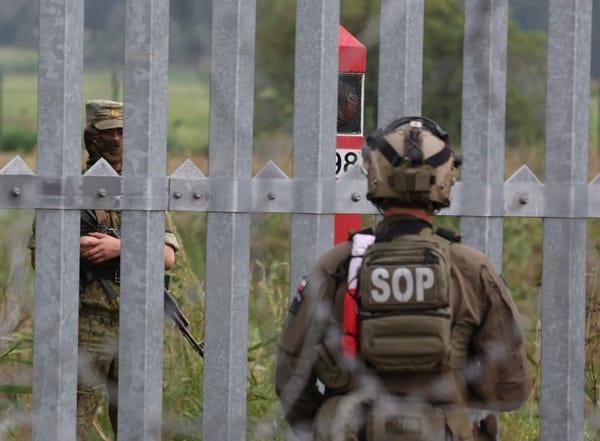
CEE needs to prioritise climate plans - report
Central and Eastern European (CEE) countries may hinder the EU’s ability to meet its climate goals, according to campaigners who are concerned about their National Energy and Climate Plans (NECPs).
European Commission President Ursula von der Leyen has emphasised the European Union’s commitment to achieving a net-zero power sector by 2040, and CEE’s crucial role in reaching a renewable energy share of at least 42.5% or even 45% in its energy mix by 2030.
However, only Slovenia, Croatia and Spain met the recent deadline to submit their updated plans, raising further concerns, according to a new report by the CEE Bankwatch Network.
Lack of ambition, transparency, cited as problematic
The report alleges that some CEE countries “display low ambitions” and are not taking their NECP progress reports seriously, hindered by a tendency to support gas and coal consumption instead of renewables, and even missing data in some cases. This undermines the transition away from fossil fuels and risks derailing previous commitments, according to CEE Bankwatch.
The European Court of Auditors has issued similar warnings, and emphasised the need for concrete plans to decarbonise the European economy. A lack of progress in deploying renewables in CEE is also seen as a missed opportunity, in light of the region’s potential for solar and wind power.
A proper green transition could yield significant benefits for the region, but there is a need for stronger commitment and utilisation of EU funds to achieve this goal, according to CEE Bankwatch. Transparency and civil society engagement in the NECP drafting process are also identified as lacking, with limited public consultations taking place.
Billions allocated from EU recovery funds
Since the adoption of the initial NECPs in 2019 and 2020… several CEE countries have taken steps towards phasing out coal, removing bottlenecks to promote renewable energies, decarbonising heating systems and improving energy efficiency in buildings, the report notes.
“Important reforms are currently being implemented, with some driven by EU legislation and others linked to EU funding processes. Reforms under the Recovery and Resilience Facility (RRF) and enabling conditions under the cohesion policy are notable in this regard. Additionally, billions of euros from the RRF, cohesion policy funds and the Modernisation Fund were allocated between 2021 and 2022, directing much-needed investments to various support schemes.
“Member states in the CEE region are making use of EU funds by establishing ambitious schemes to deploy renewable sources of energy. Using the RRF, offshore wind farms are due to be constructed in Poland, and a photovoltaic park will be installed on an old network of mines and coal power plants in Romania,” according to CEE Bankwatch.
Poland, Hungary, Czechia, Bulgaria amongst beneficiaries
“With the support of cohesion policy funds, the city of Warsaw can modernise its grid by deploying smart grid technologies through the automation of high-voltage lines. Elsewhere, efforts are being made to renovate the building stock in countries such as Czechia, where the RRF-funded New Green Saving scheme is in place.
“Hungary will implement a measure for energy-efficient renovations and Slovakia is working towards decarbonisation by supporting the development of prosumers and energy communities,” CEE Bankwatch wrote.
Countries such as Bulgaria are investing in clean mobility and public transport through funding from the RRF, CEE Bankwatch said. These measures would probably not have been implemented without EU funds. In this sense, they act as important enablers for facilitating, or even surpassing, the implementation of the NECPs. As such, they serve as a catalyst for energy transition in the CEE region, supporting the advancement of EU goals for sustainable energy.
Bulgaria, Hungary criticised for lack of plan
On Bulgaria, the EU’s poorest country, CEE Bankwatch commented that “One of the most concerning aspects of the current version of the Bulgarian NECP is the lack of a general plan to phase out coal and other fossil fuels. The absence of these goals and, indeed, any concrete decarbonisation plan, is impeding Bulgaria from accessing funding from the Just Transition Fund.”
On Hungary, it said its “NECP, adopted in January 2020, is flawed in several respects. First, its energy efficiency target is nowhere near ambitious enough, setting an extremely weak target of 6.7% compared with 2018 levels. Second, there are no targeted measures to assist those in energy poverty. Third, it sets a renewable energy target of only 21%. With regard to medium- and long-term energy perspectives, the government’s approach lacks ambitious milestones,” CEE Bankwatch wrote.
Poland too coal-focused, lacks transparency
On Poland, CEE Bankwatch reported that “the current NECP does not align with EU climate objectives and reduction targets. It does not set a date for phasing out coal, nor does it include a plan for closing coal mines or divesting from coal assets.
“Perhaps the most worrying aspect of the plan is the crucial role assigned to coal in the energy mix, which is expected to maintain a share of more than 50% until the first nuclear power plant is established in the 2030s. These serious shortcomings blatantly contradict the EU’s objective of achieving climate neutrality by 2050. Disappointingly, the process of revising the plan lacks transparency,” it added.
Slovakia’s missing data undermined plans
“One of the risks lies in the technical issues involved in updating the NECPs. An example of this is the NECP progress reports, which have not always been taken seriously in some countries, such as in Slovakia, where data are missing. Inaccurate or inconsistent data can undermine the effectiveness of the updated plans,” CEE Bankwatch wrote.
“The modelling that underlies Slovakia’s current NECP lacks a target for carbon neutrality. Instead, the plan adopts an unambitious approach that emphasises a switch from coal to fossil gas, nuclear and biomass,” CEE Bankwatch wrote.
The renewable energy target of 19.2% by 2030 is equally unambitious and based on significant inaccuracies, particularly with regard to accounting for heating from biomass in households and small sources of air pollution, factors that have not been properly considered.
“Slovak authorities have been supplying misleading information to Eurostat, the European Statistical Office, dating back to 2010. Therefore, the country’s renewable energy share needs to be revised to reflect the actual figures.
“In a more positive step, Slovakia has decided to phase out lignite mining and combustion by 2023, which is expected to reduce Slovakia’s greenhouse gas emissions by approximately 3-5%, saving EUR 388-605mn in electricity prices.
“That Slovakia negotiated exemptions to the phasing out of Russian fuels gives a clear indication of where its priorities currently lie. In 2022, 60% of the country’s fossil gas imports came from Russia. Shockingly, based on the latest figures for 2023, Slovakia is the world’s sixth-largest importer of Russian fossil fuels.
The strategy to phase out Russian fuels and fossil fuels, in general, should be a part of the NECP. The revised NECP should set out a pathway for modernising district heating in line with the European Green Deal, REPowerEU and climate neutrality targets,” CEE Bankwatch concluded.
Baltic states need clearer goals
“Estonia’s current NECP, published on 19 December 2019, was developed on the basis of Estonia’s Energy Sector Development Plan until 2030, which was drawn up in 2017 and is now widely considered to be outdated,” CEE Bankwatch recalled.
“The NECP states that Estonia does not have any major problems with energy poverty and that people experiencing energy poverty are entitled to receive a general subsistence allowance. The situation has changed drastically in the past year, with the government introducing new allowances to cover electricity and heating bills due to exceptionally high prices. However, these subsidies are not a sustainable solution, and therefore a long-term strategy is needed to reduce energy poverty,” the report added.
Regarding its southern neighbour, CEE Bankwatch commented that “in its initial NECP, Latvia failed to set ambitious targets for the renovation of multi-apartment buildings, identifying only 2,000 buildings for renovation. Moreover, while Latvia has set an overall target for renewable energy, it lacks specific targets for key renewable energy sources such as solar and wind.
“The current NECP includes a target to develop and implement a comprehensive long-term solution to increase the energy efficiency of the housing stock by 2030. However, little progress has been made towards reaching this target and it remains to be seen how it will be achieved,” CEE Bankwatch added.
Romania criticised for blocking large wind, solar farms
“Romania’s existing NECP suffers from several shortcomings that hinder its effectiveness in achieving its desired climate trajectory. Specifically, there is a lack of coherence between the objectives set and the measures proposed to meet them,” CEE Bankwatch said.
“The plan merely presents an inventory of actions without providing a clear perspective on how they complement each other. The level of ambition for renewables does not reflect the country’s potential. For instance, the projected 30.7% share of renewables by 2030 falls short of the European Commission’s recommended target of 34%. The feasibility of even this limited target is doubtful given Romania’s heavy reliance on coal.
“Unfortunately, gas is considered the most suitable fuel for the energy transition. The total cost of these fossil gas investments, funded by EU and state public funds, is expected to reach EUR 4.5 billion, which risks deepening Romania’s dependence on fossil fuels.
“In addition to the planned gas investments, Romania also intends to increase its nuclear energy production. The Ministry of Agriculture and Rural Development (has meanwhile) sought to block wind and solar energy projects from being built on plots larger than 50 hectares.
“Most importantly, there is an urgent need to invest in the expansion, modernisation and digitalisation of the national electricity grid in order to efficiently integrate new renewable energy capacity,” CEE Bankwatch added.





